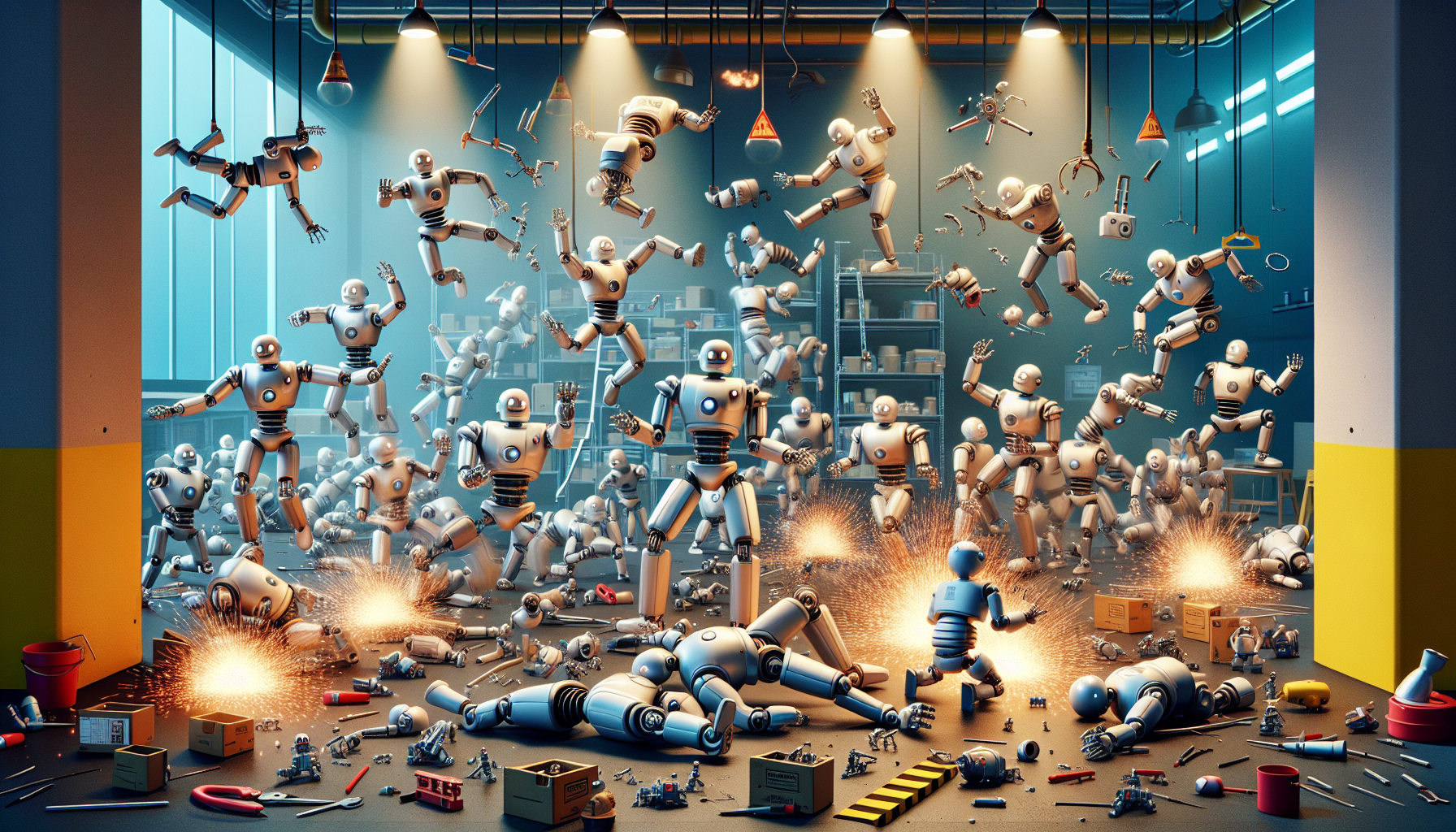Understanding Robotic Malfunctions
Robots have entered multiple facets of our life, from industrial manufacturing to household chores. However, despite advancements in technology, these machines can sometimes go awry. Malfunctions can happen for a multitude of reasons, influencing not only productivity but also safety.
The Anatomy of a Robot
To appreciate why errors occur, it’s essential to have a basic understanding of how robots function. A typical robot includes sensors, actuators, and a control system. Sensors detect environmental changes, actuators manage physical movements, and the control system processes data to execute tasks. When any of these components fail, it can lead to significant malfunctions.
<h4 Types of Robotic Malfunctions
1. **Software Glitches**: Like any digital system, robots run on software that may contain bugs or errors. These glitches can cause erratic behavior.
2. **Hardware Failures**: Mechanical components can wear out or become damaged, especially in high-stress environments.
3. **Environmental Interference**: robots that rely on sensors may misinterpret inputs due to environmental changes, such as lighting or temperature fluctuations.
4. **Human Error**: Operators or programmers can also contribute to malfunctions by providing incorrect inputs or failing to calibrate the systems properly.
Famous Robotic Malfunctions
Several high-profile incidents have showcased the vulnerabilities in robotic systems, making headlines and raising concerns about how we incorporate these machines into our daily lives.
The Tesla Autopilot Incident
Tesla’s Autopilot system has been at the forefront of discussions regarding autonomous driving technology. In 2016, a tragic accident involving a Tesla vehicle occurred when the Autopilot feature failed to recognize a turning truck, resulting in a fatal crash. The car’s sensors could not differentiate the white side of the trailer against a bright sky, leading to a catastrophic oversight. This incident sparked debates about the readiness of self-driving technology and the sufficiency of current safety measures.
<h4 Lessons Learned
The crash underscored the importance of rigorous testing and the need for continuous improvement in machine learning algorithms. While the technology holds promise, inherent limitations still need addressing before full implementation in public vehicles.
Boston Dynamics’ Stretch and the Warehouse Fiasco
Boston Dynamics has developed robots capable of performing complex tasks in high-stakes environments. However, during a public demonstration of the Stretch robot designed for warehouse logistics, the robot displayed erratic movements, knocking over stacks of boxes. While the incident was not dangerous, it highlighted the challenges in developing a robot that must navigate dynamic environments with varying human interaction and unpredictable obstacles.
<h4 The Importance of Human-Robot Interaction
Understanding human-robot interaction is crucial. While designing robots for real-world applications, engineers must prioritize safety and ensure that robots understand and adapt to human presence and actions in their environment.
RoboCup’s Goalkeeper Mishap
RoboCup, an international robotics competition, features robots playing soccer. In one notable event, a robot goalkeeper became confused by the ball’s unpredictable movements and mistakenly kicked it into its own goal. The audience couldn’t help but laugh, but this incident raised questions about the limitations of robot perception in dynamic settings.
<h4 Improving Perception and Adaptability
This malfunction showed that while robots can perform programmed tasks, their ability to adapt to unpredicted changes and learn from them is still developing. Enhancing perception algorithms remains essential to creating robots that can react appropriately to unexpected scenarios.
Implications of Robotic Errors
The ramifications of robotic malfunctions extend beyond the immediate incident. They can have broader implications for industries, society, and even legislation.
Safety Concerns
One of the most apparent consequences is safety. When robots malfunction, they can pose serious threats to human life. In industrial settings where robots work alongside humans, a mistake can lead to accidents causing injuries or fatalities.
Economic Impact
Malfunctions can result in significant economic losses for businesses. Downtime due to robot failures can disrupt productivity and lead to costly repairs. Furthermore, negative press from a malfunction can damage a brand’s reputation and consumer trust.
Ethical Considerations
As robots become more integrated into society, the ethical implications of their failures warrant serious consideration. Should a robot be held accountable for causing harm? What about the software engineers who designed the system? These questions remain complex and unresolved.
The Future of Robotics and Mitigating Malfunctions
As we look forward, the field of robotics is evolving rapidly, with a keen focus on minimizing the risks associated with malfunctions.
Improved Testing Protocols
Advancements in machine learning and artificial intelligence are improving the ability of robots to learn from their environments. Furthermore, comprehensive testing protocols are being developed to ensure robots can navigate potential issues before they go live.
<h4 Simulations and Real-World Testing
Utilizing simulations allows developers to anticipate possible malfunctions and address them in a controlled environment. Real-world testing in various conditions further informs how robots may perform under pressure, generating feedback for continuous improvement.
<h3 Regulatory Frameworks
Another critical approach involves establishing robust regulatory frameworks for robotics. Governments and organizations must collaborate to create guidelines that ensure the safety and accountability of robotics industries.
<h4 Engaging Stakeholders
Engaging with all stakeholders, including researchers, manufacturers, and ethicists, will ensure that emerging technologies prioritize safety, reliability, and ethical considerations.
<h3 The Role of Artificial Intelligence
Artificial intelligence plays a vital role in enhancing robotic stability. By employing advanced algorithms, machines can learn from past mistakes and adapt their behavior accordingly. This evolution is crucial for the development of smarter, more dependable robots.
<h4 Continuous Learning Systems
Creating continuous learning systems will help robots independently gather data and refine their functionalities. This will likely reduce the chances of malfunctions and improve overall performance.
Conclusion
Robots hold immense potential that continues to grow as technology advances. However, being mindful of past mistakes and implementing comprehensive strategies for improvement will ensure a safer and more effective integration of robots into our lives. Understanding that with innovation comes the responsibility to manage errors is essential as we navigate the robotic future.
